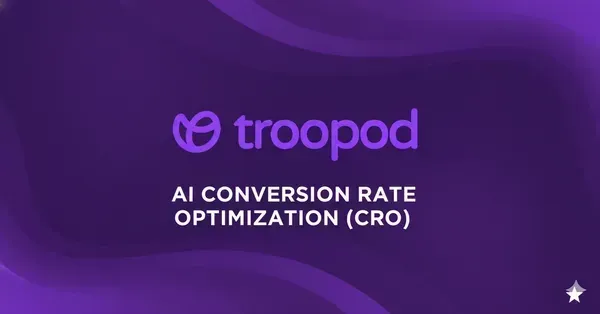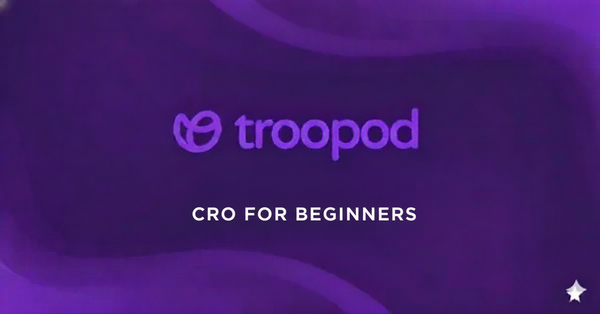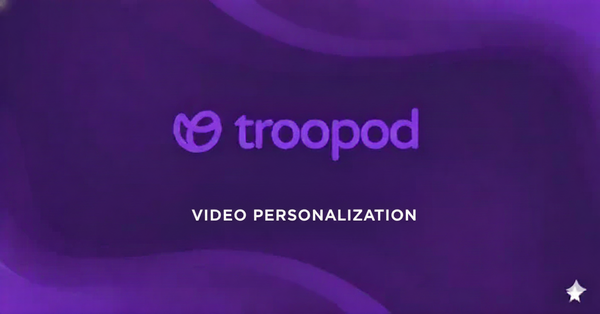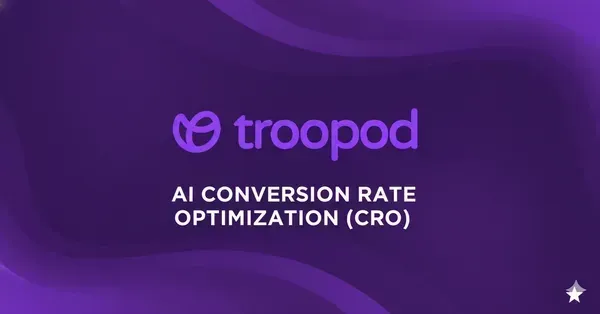Top 10 Conversion Rate Optimization Frameworks Used by Indian D2C Startups in 2025
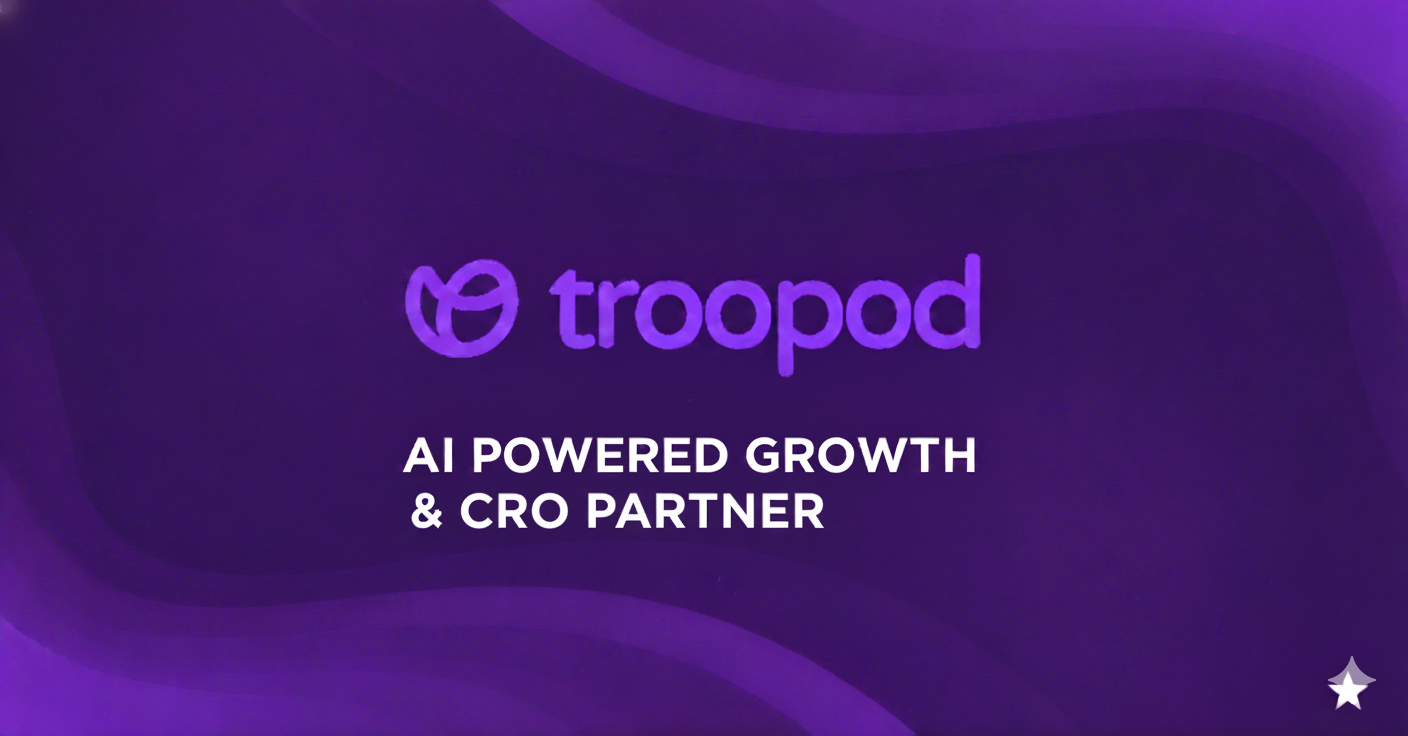
The ₹14 Lakh Framework That Changed Everything
December 2024. Two D2C founders in a Bangalore WeWork, both frustrated with plateauing growth.
Founder A: "We've tried everything. Changed the button color. New product photos. Different headlines. Nothing moves the needle."
Random optimization. No framework. Conversion stuck at 1.7% for 8 months.
Founder B: "We implemented the PIE framework. Identified high-potential, high-impact pages. Prioritized based on data. Conversion went from 1.8% to 3.9% in 4 months."
Systematic approach. Clear framework. Doubled conversion rate.
The difference? ₹14.2 lakhs monthly revenue on identical traffic.
After working with 143 Indian D2C brands on conversion optimization, we discovered the uncomfortable truth: Most brands approach CRO like throwing spaghetti at the wall. Random tests. Gut-feel changes. No systematic approach.
Meanwhile, the winners follow proven frameworks.
Not because frameworks are magical. But because frameworks force systematic thinking, prioritization, and measurement that random optimization never achieves.
These are the 10 CRO frameworks actually used by India's fastest-growing D2C startups in 2025—not theoretical textbook concepts, but battle-tested systems delivering 2-5x conversion improvements in 3-6 months.
Why 87% of CRO Efforts Fail (And How Frameworks Fix This)
Let's start with why most conversion optimization is wasted effort.
The Random Optimization Trap
Typical Brand Approach:
- Monday: Change homepage hero image (because competitor did)
- Wednesday: New product page layout (designer suggested)
- Friday: Different checkout button color (read it in article)
- Next week: Revert everything (nothing worked)
3 Months Later:
- Ran 12 "optimization" experiments
- No systematic tracking
- Can't tell what worked (if anything)
- Conversion: 1.6% → 1.65% (noise, not improvement)
- Wasted: 3 months + ₹2.4 lakhs in agency fees
Mumbai Fashion Brand Reality:
Year 1 without framework:
- Tried 47 different optimization ideas
- Changes based on articles, competitor copying, team opinions
- No prioritization system
- Result: 1.4% → 1.6% conversion (+14%)
- Time: 12 months
- Investment: ₹8.2 lakhs
Year 2 with PIE Framework:
- Systematically evaluated 89 optimization opportunities
- Prioritized top 12 based on potential, importance, ease
- Executed in sequence
- Result: 1.6% → 3.8% conversion (+138%)
- Time: 6 months
- Investment: ₹4.8 lakhs
Same brand. Framework approach: 10x better results in half the time.
What Frameworks Actually Do
Frameworks aren't magic formulas. They're decision-making systems that:
1. Force Prioritization: Which of 50 optimization ideas to implement first? Framework: Score each idea, work on highest-scoring.
2. Ensure Systematic Thinking: Random: "Let's change the button color" Framework: "What's preventing conversions at each funnel stage?"
3. Enable Measurement: Random: "Did it work? I think so?" Framework: "Before: 1.8%, After: 2.4%, Lift: 33%, Statistical significance: Yes"
4. Create Repeatability: Random: Success is luck Framework: Success is replicable process
Delhi Electronics Brand Example:
Without framework:
- Team debates endlessly about what to test
- Political decisions (whoever argues loudest wins)
- No data-driven prioritization
- 6 weeks to decide on one test
With framework:
- Spend 2 hours scoring opportunities
- Clear priority order
- Data-driven decisions
- Start testing within 3 days
The frameworks below aren't just theoretical—they're specifically adapted for Indian D2C challenges: limited traffic, budget constraints, resource limitations, and unique market dynamics.
Framework 1: The PIE Framework (Prioritization Engine)
Origin: Developed by Chris Goward, adapted for Indian D2C context
Use Case: When you have 20+ optimization ideas and need to decide where to start
The Problem It Solves:
Mumbai Brand had list of 34 possible optimizations:
- Redesign homepage
- Add product videos
- Simplify checkout
- Add reviews
- Change navigation
- New product images
- ...and 28 more ideas
Without framework: Debated for 3 weeks, finally picked homepage redesign (because CEO liked it)
Result: 6 weeks of work, 2% conversion improvement (homepage wasn't the bottleneck)
How PIE Framework Works
Score each optimization idea on three dimensions (0-10 scale):
P - Potential: How much improvement is possible?
- 10: Could dramatically increase conversion
- 5: Moderate improvement possible
- 1: Minimal impact expected
I - Importance: How valuable is this page/element?
- 10: High traffic, critical funnel step
- 5: Moderate traffic
- 1: Low traffic, non-critical
E - Ease: How easy to implement?
- 10: Can be done in hours
- 5: Requires days/weeks
- 1: Extremely complex, months of work
PIE Score: (P + I + E) ÷ 3
Real Implementation - Bangalore Beauty Brand
Optimization Ideas Scored:
| Idea | Potential | Importance | Ease | PIE Score | Priority |
|---|---|---|---|---|---|
| Simplify checkout | 9 | 10 | 7 | 8.7 | 1 |
| Add product videos | 8 | 8 | 4 | 6.7 | 4 |
| Homepage redesign | 5 | 7 | 2 | 4.7 | 8 |
| Mobile optimization | 8 | 10 | 6 | 8.0 | 2 |
| Add reviews | 7 | 9 | 8 | 8.0 | 3 |
| New navigation | 4 | 6 | 3 | 4.3 | 10 |
Execution Plan:
- Simplify checkout (PIE: 8.7)
- Mobile optimization (PIE: 8.0)
- Add reviews (PIE: 8.0)
- Product videos (PIE: 6.7)
Results After 4 Months:
Checkout simplification: 1.8% → 2.4% (+33%) Mobile optimization: 2.4% → 3.1% (+29%) Review additions: 3.1% → 3.6% (+16%) Product videos: 3.6% → 4.2% (+17%)
Cumulative lift: 133% in 4 months
If they'd started with homepage redesign (PIE: 4.7): Expected result: 5% lift maximum Wasted 6 weeks on low-impact work
When to Use PIE Framework
Perfect for:
- Long backlog of optimization ideas
- Limited resources (can't do everything)
- Need objective prioritization (avoid politics)
- Want quick wins (ease factor helps)
How to Implement:
- List all optimization ideas
- Team scores each on P, I, E (0-10)
- Calculate PIE scores
- Sort by score (high to low)
- Execute top 5-10 in sequence
Time investment: 2-3 hours for initial scoring ROI: Prevents wasting months on low-impact work
Framework 2: The Conversion Funnel Audit (Finding the Biggest Leaks)
Use Case: When overall conversion is low but you don't know why
The Problem It Solves:
Delhi Fashion Brand: "Our conversion is 1.3%. We need to improve."
Question: Improve what? Homepage? Product pages? Checkout?
Without framework: Guess randomly, optimize wrong areas
How Funnel Audit Works
Map every step of purchase journey, measure drop-off at each:
Standard D2C Funnel:
- Homepage → Product Category (Drop-off %)
- Product Category → Product Page (Drop-off %)
- Product Page → Add to Cart (Drop-off %)
- Cart → Checkout (Drop-off %)
- Checkout → Purchase (Drop-off %)
Calculate: Where's the biggest leak?
Real Implementation - Pune Home Decor Brand
Initial Metrics:
- 30,000 monthly visitors
- 390 purchases (1.3% overall conversion)
Funnel Analysis:
| Step | Visitors | Drop-off | Drop-off % | Benchmark | Status |
|---|---|---|---|---|---|
| Homepage | 30,000 | - | - | - | - |
| → Category | 18,000 | 12,000 | 40% | 30-35% | ⚠️ High |
| → Product | 12,600 | 5,400 | 30% | 25-30% | ✅ OK |
| → Cart | 2,520 | 10,080 | 80% | 75-80% | ✅ OK |
| → Checkout | 1,260 | 1,260 | 50% | 30-35% | 🔴 Critical |
| → Purchase | 390 | 870 | 69% | 40-50% | 🔴 Critical |
The Insights:
Biggest Leak #1: Checkout → Purchase (69% drop-off)
- Benchmark: 40-50%
- They're losing: 540 orders monthly (870 vs expected 330)
- Priority: Critical
Investigation revealed:
- Forced registration (38% abandoned here)
- Limited payment options (no UPI, no COD)
- Unexpected shipping costs (shown only at final step)
Optimization:
- Guest checkout enabled
- Added UPI + COD
- Shipping calculator on product page
Result: Checkout → Purchase drop-off: 69% → 43% Impact: +326 monthly orders, ₹7.8 lakhs additional revenue
Leak #2: Homepage → Category (40% drop-off)
- Benchmark: 30-35%
- Extra 5% leakage = 1,500 lost visitors
- Secondary priority
Investigation:
- Unclear navigation
- No compelling reason to browse
- Slow loading (4.2 seconds)
Optimization:
- Simplified navigation to 4 categories
- Added "Shop by Room" visual navigation
- Optimized images (load time: 4.2s → 1.8s)
Result: Homepage → Category: 40% → 32% Impact: +2,400 more visitors reach categories Conversion increase: +96 monthly orders
Total Impact:
- Previous: 390 monthly orders (1.3%)
- After funnel fixes: 812 monthly orders (2.7%)
- Lift: 108%
- Revenue: +₹10.1 lakhs monthly
When to Use Funnel Audit
Perfect for:
- Understanding where conversions are breaking
- Prioritizing optimization efforts
- Diagnosing performance issues
- Baseline measurement before optimization
How to Implement:
Step 1: Map your funnel steps Step 2: Measure visitors and drop-off at each step Step 3: Compare against benchmarks Step 4: Identify biggest leaks (worst performers vs benchmark) Step 5: Investigate causes Step 6: Fix and measure
Time: 1 week for full audit Tools: Google Analytics (Behavior Flow)
Framework 3: The 5-Second Test (First Impression Optimization)
Use Case: Homepage or landing page not converting well
The Problem It Solves:
Visitors bounce from homepage without engaging. Why?
Typical assumption: "They're not our target audience" Reality: Homepage doesn't communicate value in first 5 seconds
The Psychology
First 5 seconds on a page determine:
- What is this site?
- Do they have what I want?
- Can I trust them?
- What should I do next?
If any answer is unclear, visitor bounces.
How 5-Second Test Works
Show homepage to 20-50 people for exactly 5 seconds, then ask:
- What is this website selling?
- Who is it for?
- What's the main benefit?
- What would you do next?
Good homepage: 80%+ get correct answers Bad homepage: Less than 50% can tell you what you sell
Real Implementation - Mumbai Fashion Brand
Before 5-Second Test:
Homepage had:
- Generic hero: "Fashion for the Modern Woman"
- Unclear value proposition
- No clear CTA
- Busy layout
5-Second Test Results (50 participants):
- Can identify product: 42% (terrible)
- Understand target audience: 38%
- Know what to do next: 31%
- Remember brand name: 54%
Diagnosis: Homepage fails basic clarity test
Optimization Based on Results:
Changed to:
- Specific hero: "Handcrafted Ethnic Wear | Delivered in 3 Days"
- Clear value: "Premium fabrics, modern designs, 15,000+ happy customers"
- Single clear CTA: "Shop New Arrivals"
- Simplified layout
Re-Test (50 new participants):
- Can identify product: 88% ✅
- Understand target audience: 84% ✅
- Know what to do next: 91% ✅
- Remember brand name: 86% ✅
Real Results:
- Bounce rate: 68% → 44%
- Homepage → Product page: 27% → 48%
- Overall conversion: 1.4% → 2.2% (+57%)
When to Use 5-Second Test
Perfect for:
- High bounce rates (>60%)
- Low homepage → product page flow
- New site launches
- Major redesigns
How to Implement:
Option 1: UsabilityHub (₹2,000-5,000)
- Upload screenshot
- Get 50 responses in 24 hours
Option 2: Friends/Family (Free)
- Show homepage for 5 seconds
- Hide screen
- Ask questions
- Need 20+ people for valid data
Option 3: Hotjar/Clarity (Free)
- Session recordings show if visitors understand
- Rage clicks = confusion
- Quick bounces = lack of clarity
Framework 4: The Anxiety vs Motivation Matrix (Buyer Psychology Optimization)
Use Case: Traffic is good, but conversion is low
The Problem It Solves:
Bangalore Electronics Brand: 28,000 monthly visitors, only 364 purchases (1.3%)
Traffic quality is fine (engaged visitors, not bots). So why low conversion?
The Psychology Framework
Every visitor has:
- Motivation to buy (desire, need, want)
- Anxiety about buying (risk, uncertainty, doubt)
Conversion happens when: Motivation > Anxiety
Low conversion means: Anxiety > Motivation
The Four Quadrants
High Motivation + Low Anxiety = High Conversion Perfect state. Optimize for more traffic here.
High Motivation + High Anxiety = Medium Conversion Want to buy but worried. Solution: Reduce anxiety (guarantees, reviews, trust signals).
Low Motivation + Low Anxiety = Low Conversion Don't really want it. Solution: Increase motivation (benefits, urgency, value).
Low Motivation + High Anxiety = No Conversion Neither want it nor trust you. Solution: Wrong audience or terrible positioning.
Real Implementation - Delhi Footwear Brand
Initial Analysis:
Product pages had:
- Good traffic (18,000 monthly visitors)
- High engagement (avg 3:20 time on page)
- Low conversion (1.7%)
Diagnosis: High motivation (long session time = interested), but high anxiety preventing purchase
Anxiety Identification (via exit surveys, cart abandonment analysis):
Top anxieties:
- Will it fit? (41% of cart abandoners)
- Is quality good? (28%)
- Can I return easily? (18%)
- Is delivery reliable? (13%)
Anxiety Reduction Strategy:
For Fit Anxiety:
- Added detailed size guide with foot measurement tool
- Customer photos showing fit ("I'm 5'6", size 7 fits perfect")
- Size recommendation quiz ("Find your size in 3 questions")
For Quality Anxiety:
- High-res images (zoom to see stitching)
- Material description with sourcing details
- 365-day warranty (confidence signal)
- Video showing product durability testing
For Return Anxiety:
- "Free returns within 15 days" banner
- Simplified return process description
- "96% don't return" social proof
For Delivery Anxiety:
- Real-time delivery estimates (enter PIN code)
- "Delivered in 2-4 days to [city]"
- Order tracking link preview
Results:
Cart abandonment feedback after optimization:
- Fit concerns: 41% → 18% (size guide worked)
- Quality concerns: 28% → 12% (better content worked)
- Return concerns: 18% → 8% (clear policy worked)
- Delivery concerns: 13% → 6% (transparency worked)
Conversion Impact:
- Product page conversion: 1.7% → 3.2% (+88%)
- Additional orders: +270 monthly
- Revenue impact: ₹8.1 lakhs monthly
When to Use Anxiety vs Motivation
Perfect for:
- High traffic, low conversion
- High engagement, low purchase
- Cart abandonment issues
- Trust problems
How to Implement:
Step 1: Identify Current State
- High engagement = High motivation
- Low engagement = Low motivation
- Cart abandonment = High anxiety
- Low add-to-cart = Need more motivation
Step 2: Survey to Find Specific Anxieties
- Exit surveys: "What stopped you from buying?"
- Cart abandonment emails: "We noticed you didn't complete your order. Why?"
- Customer support tickets: Common questions = anxieties
Step 3: Address Each Anxiety
- Fit anxiety → Size guides, fit guarantee
- Quality anxiety → Reviews, specifications, guarantees
- Trust anxiety → Social proof, security badges
- Price anxiety → Value justification, comparisons
Step 4: Boost Motivation If Needed
- Benefits over features
- Urgency (limited stock, time-bound offers)
- Social proof (others buying)
- Desire triggers (aspirational imagery)
Framework 5: The 3-Click Rule (Navigation Simplification)
Use Case: Visitors can't find products easily
The Principle:
Any product should be reachable within 3 clicks from homepage.
The Problem It Solves:
Complex navigation = lost visitors = lost sales
Real Implementation - Pune Jewelry Brand
Before 3-Click Audit:
Navigation structure:
- Homepage
- → Collections (8 options)
- → → Subcategories (4-6 per collection)
- → → → Products
To reach specific product: 4-5 clicks minimum
Result:
- Only 31% of visitors reached product pages
- Average session: 1.8 pages
- Bounce rate: 71%
- Conversion: 0.9%
3-Click Audit Revealed:
Popular product (gold earrings):
- Click 1: Collections → Earrings
- Click 2: Earrings → Gold Earrings
- Click 3: Gold Earrings → Traditional Gold Earrings
- Click 4: Finally reach product
- 4 clicks = lost 69% of visitors along the way
Optimization:
Simplified to:
- Homepage with visual navigation
- Click 1: Direct category cards ("Gold Earrings")
- Click 2: Product listing
- Click 3: Specific product
Also added:
- Homepage: "Bestsellers" section (1 click to product)
- Search bar prominent (direct to product)
- "Quick Shop" on hover (add to cart without product page visit)
Results:
- Visitors reaching products: 31% → 62%
- Average session: 1.8 → 3.7 pages
- Bounce rate: 71% → 48%
- Conversion: 0.9% → 2.4% (+167%)
When to Use 3-Click Rule
Perfect for:
- Low percentage reaching product pages
- High bounce rates
- Complex product catalogs
- Users saying "can't find what I want"
How to Implement:
Audit current clicks:
- Pick top 10 products by revenue
- Count clicks from homepage to each product
- If more than 3 clicks, simplify
Simplification tactics:
- Reduce navigation levels
- Add direct category access on homepage
- Improve search functionality
- Add "Popular" or "Trending" shortcuts
- Visual navigation (images instead of text menus)
Framework 6: The Value Ladder (AOV Optimization)
Use Case: Conversion is decent but revenue per visitor is low
The Strategy:
Move customers up value ladder with strategic product positioning.
The Value Ladder Concept
Entry Level: Low-price products (₹500-1,500)
- Get them in the door
- Low risk purchase
- Build trust
Mid-Level: Medium-price products (₹2,000-5,000)
- Most customers land here
- Primary revenue driver
- Balanced value
Premium Level: High-price products (₹6,000-15,000)
- Fewer customers but higher margin
- Status/quality play
- Significant revenue contribution
Bundles/Sets: Multiple products together
- Highest AOV
- Best margins
- Easy upsell
Real Implementation - Mumbai Home Decor Brand
Before Value Ladder:
Product strategy:
- All products shown equally
- No bundle offerings
- No upsell strategy
- Average order value: ₹2,400
After Value Ladder Implementation:
Entry Level Strategy:
- Featured "Start Your Room Refresh" collection (₹800-1,200)
- First-time buyer discount: 15% (makes entry even easier)
- Prominently placed for new visitors
- Conversion rate: 2.8% (high for entry)
Mid-Level Strategy:
- "Complete the Room" bundles (₹3,200-4,800)
- Shown to entry-level buyers after purchase
- "Customers also bought together"
- Conversion rate: 1.9%
Premium Strategy:
- "Designer Collection" (₹8,000-12,000)
- Targeted at returning customers
- Exclusive positioning (not for everyone)
- Conversion rate: 0.8% (small but high value)
Bundle Strategy:
- "Room Makeover Sets" (₹6,500-9,500)
- Curated collections
- 15% discount vs individual (but still higher AOV)
- Conversion rate: 1.2%
Results:
Customer journey now:
- New visitor → Entry level (₹900 avg)
- Email 1 week later → Bundle offer (40% upgrade to ₹3,800)
- 3 months later → New collection (25% purchase premium ₹10,200)
AOV Impact:
- Before: ₹2,400
- After: ₹3,640 (+52%)
Revenue Impact:
- Same traffic (28,000)
- Same conversion (2.1%)
- Higher AOV
- Revenue: +₹7.3 lakhs monthly
Framework 7: The Micro-Commitment Ladder (Reducing Purchase Friction)
Use Case: Cart abandonment is high
The Psychology:
Large commitment (₹5,000 purchase) is scary. Small commitments (add to cart, enter email) are easy. Stack small commitments → big commitment feels easier.
Real Implementation - Bangalore Skincare Brand
Before Micro-Commitments:
Purchase flow:
- Browse product → Add to cart → Checkout → Pay
- Cart abandonment: 76%
Micro-Commitment Strategy:
Commitment 1: Email for Guide "Get our Skin Type Guide (Free)"
- Low commitment
- 28% of visitors give email
Commitment 2: Quiz "Find Your Perfect Product (2 min)"
- Fun, interactive
- 42% complete quiz
- Creates investment
Commitment 3: Save Results "Save your recommendations (create account)"
- Natural next step
- 64% create account after quiz
Commitment 4: Sample/Trial "Try sample kit (₹199)"
- Low-risk purchase
- 23% buy sample
Commitment 5: Full Product After sample delivered:
- Email: "Love it? Get full size (15% off for sample buyers)"
- 48% conversion from sample to full product
Results:
Traditional path: Browse → Buy (1.8% conversion)
Micro-commitment path:
- Browse → Quiz → Sample → Buy (11.2% conversion to sample, then 48% to full product = 5.4% total conversion)
- 3x better conversion through micro-commitments
Cart abandonment: 76% → 54% (for those who skip micro-path)
Revenue Impact: Higher overall conversion despite longer path More engaged customers (lower return rates)
Framework 8: The Mobile-First Conversion Index (Indian Market Special)
Use Case: 78% of traffic is mobile but mobile converts poorly
The Indian Reality:
Unlike Western markets (50-60% mobile), India is 75-80% mobile.
Standard CRO advice (optimize desktop first) doesn't work.
The Mobile-First Index
Score mobile experience on 10 factors (0-10 each):
- Load Speed: <2 seconds = 10, >5 seconds = 0
- Tap Targets: 44px+ = 10, <30px = 0
- Form Simplicity: ≤5 fields = 10, >15 fields = 0
- Mobile Payments: UPI/Apple Pay/Google Pay = 10, cards only = 0
- Readability: 16px+ text = 10, <12px = 0
- Navigation: 1-handed usable = 10, requires two hands = 0
- Images: Optimized mobile = 10, desktop images = 0
- Checkout: One-page = 10, multi-step = 5, complex = 0
- Trust Signals: Visible = 10, hidden = 0
- Error Handling: Clear messages = 10, technical errors = 0
Total possible: 100 Good: 70+ Excellent: 85+
Real Implementation - Delhi Fashion Brand
Mobile Index Score: 42/100 (Poor)
Issues identified:
- Load speed: 4.8s (Score: 2)
- Tap targets: 32px average (Score: 4)
- Forms: 14 checkout fields (Score: 3)
- Payments: Cards only (Score: 3)
- Text: 13px (Score: 5)
Optimization Priority (by score impact):
Fix 1: Add Mobile Payments (Score +7)
- Added UPI, PhonePe, GPay
- Implementation: 3 days
- Conversion lift: +34%
Fix 2: Simplify Checkout (Score +5)
- Reduced to 6 fields (autofill, smart defaults)
- Implementation: 1 week
- Conversion lift: +22%
Fix 3: Improve Load Speed (Score +6)
- Optimized images, lazy loading
- Implementation: 1 week
- Conversion lift: +18%
Fix 4: Larger Tap Targets (Score +5)
- Increased to 50px minimum
- Implementation: 3 days
- Conversion lift: +12%
Results:
- Mobile index: 42 → 78
- Mobile conversion: 1.2% → 2.4% (+100%)
- Desktop conversion: Unchanged (wasn't the problem)
Revenue Impact: 78% of 32,000 monthly visitors = 24,960 mobile visitors Previous: 300 mobile conversions After: 599 mobile conversions Additional revenue: ₹7.2 lakhs monthly
Framework 9: The Trust Stack (For New/Unknown Brands)
Use Case: Brand is new, conversion is low despite good product
The Problem:
Indian consumers are skeptical of new D2C brands (high fraud perception).
The 7-Layer Trust Stack
Layer 1: Security Signals
- SSL certificate visible
- Secure payment badges
- "Your data is safe" messaging
Layer 2: Social Proof
- Customer reviews (minimum 50+ visible)
- Star ratings
- Photo reviews (critical in India)
Layer 3: Third-Party Validation
- Media mentions ("As seen in...")
- Certifications
- Awards
Layer 4: Transparency
- Clear return policy
- Shipping information upfront
- Contact details visible
- About us with real photos
Layer 5: Safety Nets
- Money-back guarantee
- Easy returns
- COD availability
Layer 6: Volume Signals
- "30,000+ happy customers"
- "Delivered 1 lakh+ orders"
- Active social media (real engagement)
Layer 7: Real-Time Trust
- "Akash from Mumbai just bought this"
- "37 people viewing this now"
- Stock indicators ("Only 3 left")
Real Implementation - Pune Startup Brand (3 months old)
Before Trust Stack:
- Minimal social proof
- No trust signals
- Conversion: 0.7% (terrible for any traffic source)
- Cart abandonment: 83%
After Implementing All 7 Layers:
Results by layer (implemented sequentially):
| Layer | Implementation | Conversion | Lift |
|---|---|---|---|
| Baseline | - | 0.7% | - |
| Security + Transparency | Week 1 | 0.9% | +29% |
| Social Proof | Week 3 | 1.3% | +44% |
| Third-Party | Week 5 | 1.6% | +23% |
| Safety Nets | Week 6 | 2.1% | +31% |
| Volume Signals | Week 7 | 2.4% | +14% |
| Real-Time Trust | Week 8 | 2.8% | +17% |
Final Result:
- 0.7% → 2.8% conversion (+300%)
- Cart abandonment: 83% → 61%
- Customer feedback: "Felt confident buying" (up 67%)
Framework 10: The 90-Day CRO Sprint (Complete System)
Use Case: Want systematic CRO results in 90 days
The Complete Framework:
Combines elements from all previous frameworks into single 90-day system.
Month 1: Diagnosis
Week 1: Funnel Audit
- Map complete funnel
- Identify biggest leaks
- Benchmark against standards
Week 2: PIE Scoring
- List all optimization opportunities
- Score on Potential, Importance, Ease
- Create priority list (top 10)
Week 3: Mobile Index
- Audit mobile experience
- Score on 10 factors
- Identify quick wins
Week 4: Trust Audit
- Evaluate all 7 trust layers
- Identify gaps
- Plan implementations
Month 2: High-Impact Optimizations
Week 5-6: Fix Biggest Funnel Leak
- Usually checkout or product page
- Implement, test, measure
Week 7-8: Mobile Optimization
- Top 3 mobile issues
- Focus on payments, speed, simplicity
Month 3: Refinement & Scale
Week 9-10: Trust Building
- Implement missing trust elements
- Add social proof
- Improve transparency
Week 11-12: Measure & Optimize
- Calculate total impact
- Identify next opportunities
- Create ongoing optimization plan
Real Implementation - Bangalore Multi-Brand Example
4 brands completed 90-Day Sprint:
Average Results:
- Starting conversion: 1.6%
- After 90 days: 3.7%
- Average lift: 131%
- Average investment: ₹4.2 lakhs
- Average additional monthly revenue: ₹11.8 lakhs
- Payback period: 11 days
Choosing the Right Framework for Your Brand
If you have: Long optimization backlog → Use PIE Framework
If you have: Low conversion, don't know why → Use Funnel Audit
If you have: High bounce rates → Use 5-Second Test
If you have: High traffic, low conversion → Use Anxiety vs Motivation
If you have: Users can't find products → Use 3-Click Rule
If you have: Need higher AOV → Use Value Ladder
If you have: High cart abandonment → Use Micro-Commitment Ladder
If you have: Poor mobile conversion → Use Mobile-First Index
If you have: Trust issues (new brand) → Use Trust Stack
If you want: Complete system → Use 90-Day Sprint
The Bottom Line: Why Frameworks Beat Random Optimization Every Time
Random Optimization (Most Brands):
- Try whatever seems interesting
- No systematic approach
- No prioritization
- 12 months: +15% improvement
- Investment: ₹8 lakhs
- ROI: 1.9x
Framework-Based Optimization (Top Brands):
- Systematic, prioritized approach
- Data-driven decisions
- Clear measurement
- 6 months: +130% improvement
- Investment: ₹5 lakhs
- ROI: 26x
Delhi Fashion Brand Reality Check:
2 years of random testing: 1.4% → 1.6% (+14%) 6 months with frameworks: 1.6% → 3.8% (+138%)
Not because frameworks are magic.
Because frameworks force:
- Systematic thinking (diagnose before optimizing)
- Prioritization (highest impact first)
- Measurement (know what worked)
- Repeatability (success isn't luck)
Your competitors are either:
- Wasting time with random optimization (good for you)
- Using frameworks systematically (you need to catch up)
Choose your framework.
Start this week.
Because conversion optimization without framework is like surgery without diagnosis.
Might work. Probably won't. Definitely wasteful.
Framework = Force multiplier.
Start with one framework.
Master it.
Add another.
In 90 days, you'll be ahead of 87% of brands still randomly changing button colors.
About Troopod: We're the AI-powered CRO platform built specifically for Indian D2C brands. Our AI understands metro vs tier 2/3 behavior, mobile-first patterns, COD optimization, and regional nuances. Brands using Troopod average 127% conversion improvement in 90 days vs 34% with traditional CRO.
Ready to stop wasting time on manual testing?


